Related Research Articles

The Four Seasons is a group of four violin concertos by Italian composer Antonio Vivaldi, each of which gives musical expression to a season of the year. These were composed around 1718−1720, when Vivaldi was the court chapel master in Mantua. They were published in 1725 in Amsterdam, together with eight additional concerti, as Il cimento dell'armonia e dell'inventione.

William Howard Schuman was an American composer and arts administrator.

Adagio for Strings is a work by Samuel Barber, arguably his best known, arranged for string orchestra from the second movement of his String Quartet, Op. 11.
Appalachian Spring is a musical composition by Aaron Copland that was premiered in 1944 and has achieved widespread and enduring popularity as an orchestral suite. The music, scored for a thirteen-member chamber orchestra, was created upon commission of the choreographer and dancer Martha Graham with funds from the Coolidge Foundation. It was premiered on Monday, October 30, 1944, at the Library of Congress in Washington D.C., with Martha Graham dancing the lead role. The set was designed by the American sculptor Isamu Noguchi. Copland was awarded the 1945 Pulitzer Prize for Music for his achievement.
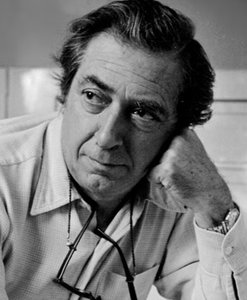
Norman Dello Joio was an American composer active for over half a century. He won a Pulitzer Prize in 1957.
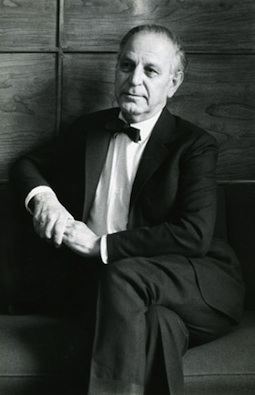
Ulvi Cemal Erkin was a member of the pioneer group of symphonic composers in Turkey, born in the period 1904–1910, who later came to be called The Turkish Five. These composers set out the direction of music in the newly established Turkish Republic. These composers distinguished themselves with their use of Turkish folk music and modal elements in an entirely Western symphonic style.
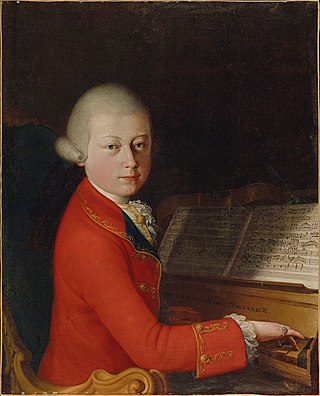
Wolfgang Amadeus Mozart's Violin Concerto No. 1 in B♭ major, K. 207, once was supposed to have been composed in 1775, along with the other four wholly authentic violin concertos. However, analysis of handwriting and the manuscript paper on which the concerto was written suggest that the date of composition might have been 1773. It has the usual fast–slow–fast structure.

La stravaganza [literally 'Extravagance'], Op. 4, is a set of concertos written by Antonio Vivaldi in 1712–1713. The set was first published in 1716 in Amsterdam and was dedicated to Venetian nobleman Vettor Delfino, who had been a violin student of Vivaldi's. All of the concertos are scored for solo violin, strings, and basso continuo; however, some movements require extra soloists.
Werner Wolf Glaser was a German-born Swedish composer, conductor, pianist, professor, music critic, and poet.
Chant du Rossignol, as it was published in 1921, is a poème symphonique by Igor Stravinsky adapted in 1917 from his 1914 opera The Nightingale.
An organ concerto is a piece of music, an instrumental concerto for a pipe organ soloist with an orchestra. The form first evolved in the 18th century, when composers including Antonio Vivaldi, George Frideric Handel and Johann Sebastian Bach wrote organ concertos with small orchestras, and with solo parts which rarely call for the organ pedal board. During the Classical period the organ concerto became popular in many places, especially in Bavaria, Austria and Bohemia, reaching a position of being almost an integral part of the church music tradition of jubilus character. From the Romantic era fewer works are known. Finally, there are some 20th- and 21st-century examples, of which the concerto by Francis Poulenc has entered the basic repertoire, and is quite frequently played.
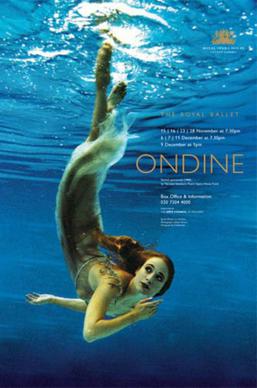
Ondine is a ballet in three acts created by the choreographer Sir Frederick Ashton and composer Hans Werner Henze. Ashton originally produced Ondine for the Royal Ballet in 1958, with Henze commissioned to produce the original score, published as Undine, which has since been restaged by other choreographers. The ballet was adapted from a novella titled Undine by Friedrich de la Motte Fouqué and it tells the tale of a water nymph who is the object of desire of a young prince named Palemon. The première of the ballet took place at the Royal Opera House, London, on 27 October 1958, with the composer as guest conductor. The first major revival of this Ashton/Henze production took place in 1988.
Miguel del Águila is an Uruguayan-born, American composer of contemporary classical music.

The Cello Concerto, Op. 27, is a concerto for cello and orchestra by Graham Waterhouse, composed in 1990. It was first performed in 1995 in Toluca and Mexico City with the composer as the soloist, and published by Friedrich Hofmeister Musikverlag in Leipzig in 2000.
Lugubre was a modern dance solo choreographed by Martha Graham to music by Alexander Scriabin. The piece was originally part of Five Poems, a ballet divided into five solo sections: Fragilité, Lugubre, Poeme ailé, Danse Languide and Désir. Each of the sections appears in various programs as individual solos. Five Poems premiered on October 16, 1927, at the Little Theatre in New York City.
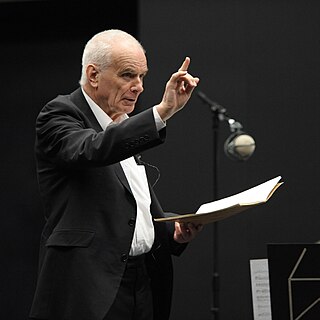
The Concerto for Trumpet and Orchestra is a composition for trumpet solo and orchestra by the British composer Peter Maxwell Davies. The work was commissioned by the Philharmonia Orchestra for its then principal trumpeter John Wallace. It was given its world premiere by Wallace and the Philharmonia Orchestra under the conductor Giuseppe Sinopoli in Hiroshima on 21 September 1988.
Aubade, a choreographic concerto for piano and 18 instruments, is a work of Francis Poulenc premiered in 1929. It was conceived as a ballet, but is more often played as a chamber piano concerto.
The Piano Concerto in A minor by Ottorino Respighi is a concerto for piano and orchestra written in 1902 and published in 1941. The work takes around 20 minutes to perform.
The Sinfonie di concerto grosso is the title of twelve works for flute, strings and basso continuo by Alessandro Scarlatti, composed in Naples from June 1, 1715 - the same year as the performance of his opera Tigrane, one of his greatest successes, and his oratorio La Santissima Trinità.
References
- 1 2 Freedman, Russell (1998). Martha Graham: A Dancer's Life (1st ed.). Houghton Mifflin Harcourt. p. 108. ISBN 0395746558.
- 1 2 3 4 Belfy, Jeanne Marie. (1991). Judith and the Louisville Orchestra: The Rest of the Story. College Music Symposium 31. College Music Society: 36–48. https://www.jstor.org/stable/40374124.
- 1 2 3 4 5 Franko, Mark. (2012). Martha Graham in Love and War: The Life in the Work. Oxford University Press. ISBN 9780199777662.
- ↑ "Judith: Choreographic Poem for Orchestra, William Schuman". Milliken Archive of Jewish Music. Retrieved 21 January 2016.
- 1 2 3 4 Dowling Long, Siobhán; Sawyer, John F.A. (September 3, 2015). The Bible in Music: A Dictionary of Songs, Works, and More. Rowman & Littlefield. p. 1269. ISBN 978-0810884526.
- ↑ "Judith (Choreographic Poem for Orchestra): I. Adagio". YouTube. Retrieved 21 January 2016.
- ↑ "Judith (Choreographic Poem for Orchestra): II. Moderato". YouTube. Retrieved 21 January 2016.
- ↑ "Judith (Choreographic Poem for Orchestra): III. Tranquillo". YouTube. Retrieved 21 January 2016.
- 1 2 "Theater set element from Judith (1950)". Walker Art Center. Retrieved 21 January 2016.
- ↑ "Judith (Choreographic Poem for Orchestra): IV. Presto". YouTube. Retrieved 21 January 2016.
- ↑ "Judith (Choreographic Poem for Orchestra): V. Andante - Coda". YouTube. Retrieved 21 January 2016.
- ↑ Hodes, Stuart (August 22, 2011). Part Real, Part Dream: Dancing with Martha Graham (3rd ed.). 69151: Concord ePress.
{{cite book}}: CS1 maint: location (link) - ↑ Adams, Doug; Apostolos-Cappadona, Diane (April 17, 2001). Art as Religious Studies (Paperback ed.). Wipf & Stock. p. 88. ISBN 1579106358.
- ↑ Dunning, Jennifer (October 26, 1987). "Dance: Graham Troupe In 'Judith' and 'Rite'". The New York Times. Retrieved 21 January 2016.
- ↑ Sabin, Robert (February 1950). "The Dance Concerto: Martha Graham and William Schuman Create a New Form for the Theatre". Dance Observer. XVII/1: 22.